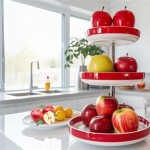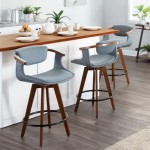How to Use a Kitchen Compost Bin
Kitchen compost bins are an excellent way to reduce food waste and create nutrient-rich compost for your garden. They are relatively easy to use and can fit nicely into your existing kitchen routines. This article will guide you through the process of using a kitchen compost bin effectively.
Choosing the Right Kitchen Compost Bin
The first step is to choose the right kitchen compost bin for your needs. There are many styles available, each with its own advantages and disadvantages.
Countertop Compost Bins: These small, stylish bins are perfect for smaller kitchens or for those who prefer to keep their compost close at hand. They are often made of ceramic, metal, or plastic and have a lid to prevent odors. Some countertop compost bins even have a built-in charcoal filter to further reduce smells.
Under-the-Sink Compost Bins: These larger bins are ideal for larger homes or those who produce more food waste. They are often made of plastic and can be purchased with a variety of features, such as a dedicated compartment for collecting food scraps and a removable liner for easy cleaning. Under-the-sink bins are often available with a charcoal filter or a venting system to minimize odors.
Bokashi Buckets: These buckets are a bit more complex, as they use a specialized fermenting process. They involve adding a mixture of bran and microorganisms to your food scraps, which breaks them down quickly. The process creates an acidic product that can be used as a soil amendment.
It is important to consider your kitchen size, your budget, and the amount of food waste you produce when choosing a compost bin.
What to Compost
Not all food waste is suitable for composting. Generally, kitchen compost bins are designed for fresh food scraps and are not recommended for meat, bones, dairy products, or oils and fats.
Here is a list of items that are suitable for kitchen composting:
- Fruit and vegetable scraps, including peels and cores
- Coffee grounds and tea bags (remove any staples or tags)
- Nutshells and eggshells
- Bread crusts and stale bread
- Paper towels and napkins (unbleached and without dyes)
- Shredded paper and cardboard (small amounts)
- Plant material, such as dead houseplants or flower stems
Items that should not be added to your kitchen compost bin:
- Meat, poultry, fish, and bones
- Dairy products (milk, yogurt, cheese)
- Fats, oils, and grease
- Pet waste
- Diseased plants
- Coal or ash ashes
- Chemically treated paper or cardboard
Using Your Kitchen Compost Bin
Once you have chosen your composting bin, you can start composting. Here are some tips to get started:
- Line your bin with a compostable liner or newspaper. This will make it easier to remove the compost when it's ready to be transferred to your outdoor compost bin or pile.
- Add fresh food scraps to your compost bin regularly. Avoid overcrowding the bin, leaving some space for air circulation.
- Sprinkle a layer of dry material, such as shredded paper or leaves, on top of the food scraps. This will help to absorb excess moisture and prevent odors.
- Empty your kitchen compost bin regularly. As the bin fills up, transfer the contents to your outdoor compost bin or pile.
- Keep your compost bin clean. Rinse the container after emptying it and allow it to air dry.
Creating compost in your kitchen is simple with the right approach. By following these steps, you can easily reduce your food waste and create a valuable resource for your garden. With a little effort, you can enjoy the benefits of kitchen composting and contribute to a more sustainable lifestyle.

Easy Kitchen Composting How To Turn Scraps Into Plants Compost Magazine

Diy Easy Kitchen Compost Bucket One Hundred Dollars A Month

How To Use A Kitchen Compost Bin Reduce Your Waste Simple Sustainable Home

The 2 In 1 Kitchen Compost Pail

Free Kitchen Pail Pick Up Less Is More

10 Best Countertop Kitchen Compost Bin Options Going Zero Waste

Kitchen Compost Bins We Love In 2025 Reviews By Wirecutter

Kitchen Compost Bin Eucalyptus Pre Order

Astrik Compost Bin

Guide To Kitchen Composting Fraiche Living








